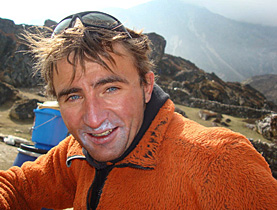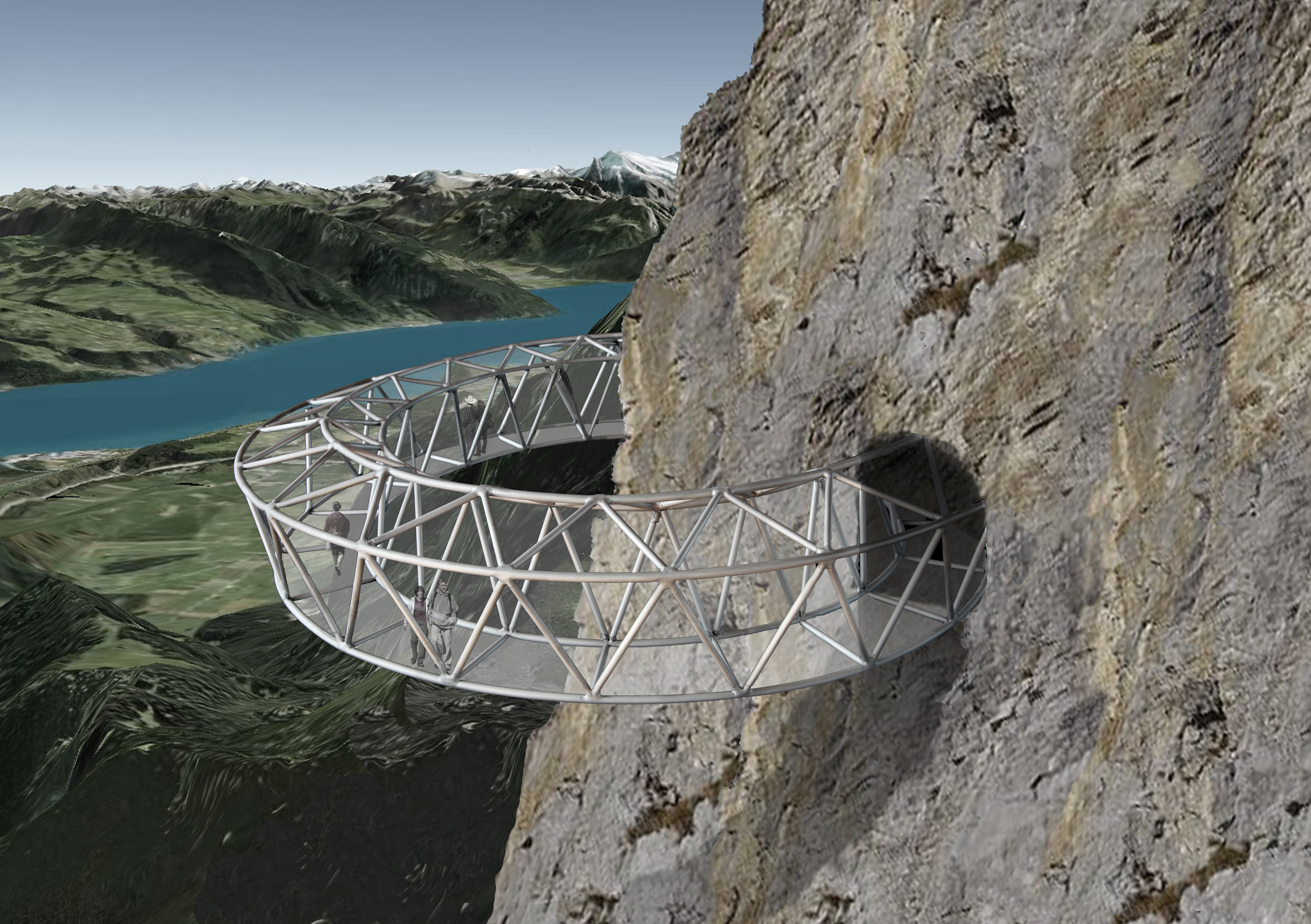Climber sets record up fearsome Eiger face

Swiss alpinist Dani Arnold has become the talk of the climbing world after blazing up the treacherous north face of the Eiger with record-breaking speed.
Arnold tells swissinfo.ch how he set out on April 20 with just half a litre of sugar-water and no real intention of breaking the speed record up a route that in 1938 took three days for the first climbers to complete (and survive).
The 27-year-old mountain guide from canton Uri in central Switzerland climbed the notorious Heckmair route – which involves a vertical ascent of 1,800 metres – in two hours, 28 minutes, pruning nearly 20 minutes off a record set in 2008 by one of Switzerland’s best known alpinists, Ueli Steck.
“It’s really hard to believe that someone could be that much faster than Ueli Steck, who seemed to be the god of alpine speed,” John Harlin, star of the Eiger IMAX movie The Alps, told swissinfo.ch. “One silly mistake can kill you.”
Arnold said the climb went better than he imagined, even with a dozen other teams on the route where sheer faces, storms and avalanches have claimed numerous lives over the years.
swissinfo.ch: Was there ever a moment on the climb when you thought, ‘What the heck am I doing up here? This is insanely dangerous.’
Dani Arnold: Never. Not once. I didn’t think even for a moment about falling. I was super concentrated and thoughts like that don’t get to exist with me. Before I started climbing I was afraid, but once I set off, those thoughts were gone.
swissinfo.ch: There were 20 other people on the same route that day. Isn’t it tough to be fast with so many others in your way?
D.A.: There was one part at the Traverse of the Gods (a steep, exposed section near the end) that was a little dangerous and I had to climb extremely carefully. I was behind some others and had to pass. You have to be very cautious. But having all of those people on the route also had advantages. They’d made a good path and most of the holds were free of snow. The disadvantages of course were that I’d sometimes have to wait maybe one or two minutes to pass.
swissinfo.ch: So it’s possible that you could do it even faster?
D.A.: At this point I don’t think so. It’s a done issue for me now.
swissinfo.ch: How long have you been planning a record-breaking attempt?
D.A.: About two years ago I got the idea in my head that maybe I’d like to try it. During those two years I left my house maybe three times for the mountain and thought, OK, today I’ll try it. But I always turned around before getting on the route. The conditions weren’t right or I wasn’t feeling well.
swissinfo.ch: What kind of training did you do for this?
D.A.: I really didn’t do any special training at all. I’m a mountain guide, so I’m always out climbing, but the best way for me to prepare is mentally, not physically. I already have nerves of steel and that’s important.
swissinfo.ch: But you’d climbed the north face before, right?
D.A.: I’ve been up it six or seven times by several routes, but the Heckmair route was the most frequent way I went up. I was there one week before the attempt and climbed the route, so I knew the conditions were good. The snow was a little hard, the rocks were dry, not a lot of ice. Really beautiful climbing.
swissinfo.ch: Did you tell Ueli Steck that you were going to try to break his record?
D.A.: Well, first, I never really thought too much about breaking the record because I’d never climbed the north face in that way before. In the back of my mind I maybe thought that breaking the record would be a goal, but there, at the start, I didn’t think about it. Instead I told myself it would be more of a practice run or exercise for me. Otherwise the pressure would have been too much.
At the start of the Traverse of the Gods I looked at my watch. It said 10:44am, so about one hour and 40 minutes in. Wow! That gave me a huge motivational boost, so big that it overpowered any fatigue.
So I didn’t tell Ueli beforehand but I sent him a text message the evening I got off the mountain because I wanted him to hear it from me first, not through the media. He’s off climbing in the Himalayas right now.
swissinfo.ch: His reaction?
D.A.: He congratulated me and asked for some details about how I’d done it and the equipment I’d used.
swissinfo.ch: He climbed the entire route without using any ropes whereas you used one twice. What difference does that make?
D.A.: I think with a rope it’s a little bit faster by maybe three to four minutes. I also wanted to climb it free (using no ropes), but the conditions weren’t good for that. There were portions that had no snow and that makes it impossible to do without a rope.
swissinfo.ch: What’s next?
D.A.: I don’t want to attempt Ueli’s other records. It’s not my goal. Rather my focus is on mixed climbing. We’re going to the Himalayas in the autumn to try to put up a new route, but we’re not saying on which mountain just yet.
Daniel “Dani” Arnold was born in Switzerland in 1984, started climbing at the age of 14, and today lives in Bürglen, canton Uri.
He began his record-breaking attempt at 9:05am up the Heckmair route. He reached the summit at 11:33am, beating Ueli Steck’s record by a few seconds shy of 20 minutes.
Arnold has started to make a name for himself by climbing extremely difficult “mixed” routes in Switzerland. These are climbs that involve using ice axes and crampons to latch onto very small rock holds as well as snow and ice.
In 2010 he and fellow Swiss climbers Stephan Siegrist and Thomas Senf made the first winter ascent of Torre Egger in Patagonia.
The north face of the Eiger is considered one of the great alpine walls of the world, with a fearsome reputation for raining rocks and ice chunks onto climbers below. The 1,800-metre-high wall also acts as a backstop, trapping violent storms, even while better weather lingers over the surrounding area.
The Heckmair route remains the easiest of the ways up the face, though it is still quite challenging with a rating of “Extremely Difficult +”, the second hardest rating under an international system. Most people typically spend 1-3 days doing the climb, depending on the climbers and conditions.

In compliance with the JTI standards
More: SWI swissinfo.ch certified by the Journalism Trust Initiative













You can find an overview of ongoing debates with our journalists here . Please join us!
If you want to start a conversation about a topic raised in this article or want to report factual errors, email us at english@swissinfo.ch.